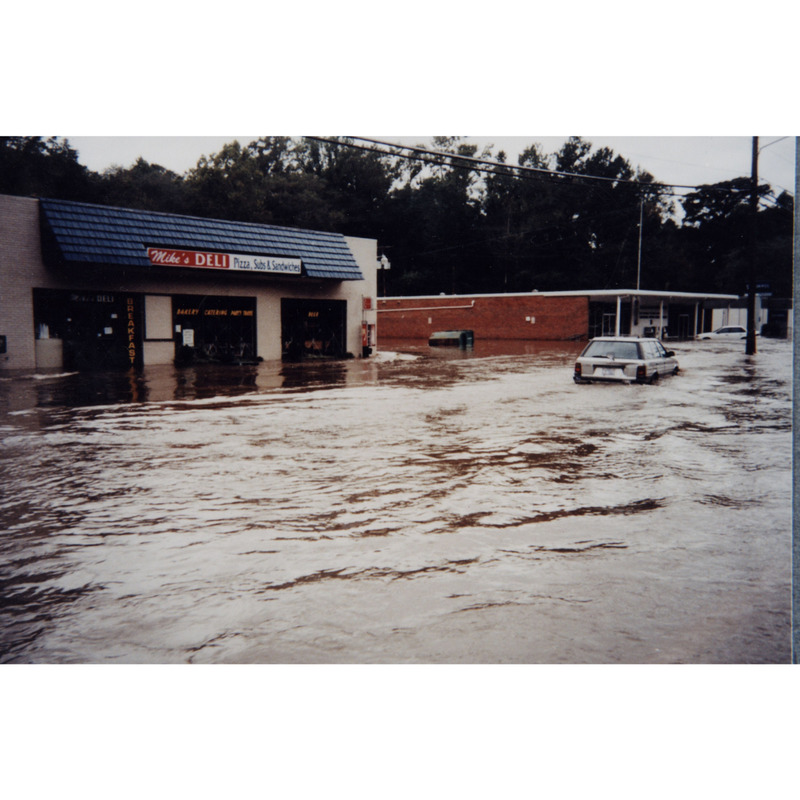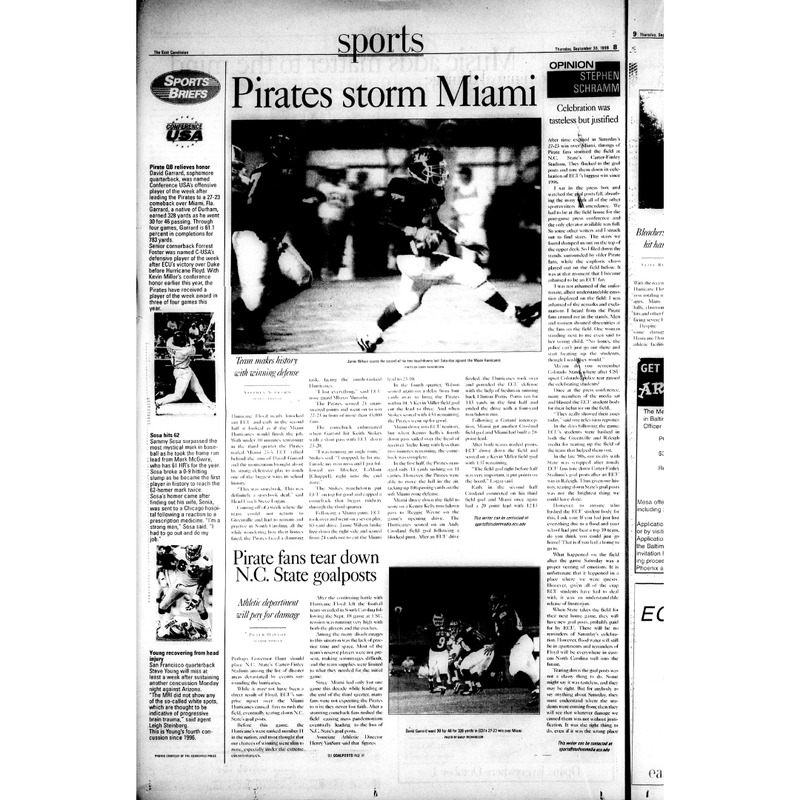Preservation and Progress
During the 1990s and 2000s, East Carolina University entered a phase of intentional balance between innovation and preservation. While the university continued to modernize, including the construction of new science complexes, student centers, and athletic facilities, it also began initiatives to preserve salvageable parts of its architectural heritage. Historic campus buildings, such as the Old Cafeteria Building, were adapted for new uses rather than being demolished. ECU’s adaptive reuse ensured that much older structures could serve contemporary needs while retaining historical character and protecting original facades. Damage sustained during Hurricane Floyd of 1999 challenged ECU’s commitment to preservation. Severe flooding from the Tar River inundated parts of campus, damaging residence halls and classroom buildings. With Dowdy-Ficklen Stadium unplayable, the Pirates’ scheduled game against the University of Miami was moved to Carter-Finley Stadium in Raleigh, home of rival NC State. ECU pulled off a dramatic 27–23 comeback victory. The win lifted spirits at ECU; even when the waters rise, the Pirate Nation rises higher. In the years since, recovery efforts across Pitt County and Eastern North Carolina have focused on improving disaster response and reducing flood risk. (Cash, 2024)

Photograph of Mike's Deli area after Hurricane Floyd in Greenville, North Carolina
Mike's Deli area after Hurricane Floyd. 1999. Flood of the Century Collection. 0786-b6-fd. East Carolina University Digital Collections. https://digital.lib.ecu.edu/23561. Accessed 19 Jun. 2025.

The East Carolinian Newspaper, September 30, 1999
The East Carolinian, September 30, 1999. 30 Sep. 1999. UA50.05.06.02.2811. East Carolina University Digital Collections. https://digital.lib.ecu.edu/58869. Accessed 19 Jun. 2025.
